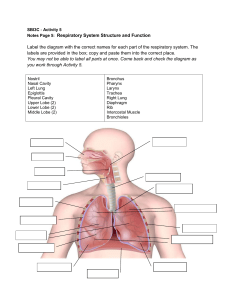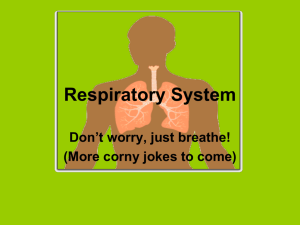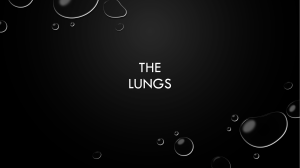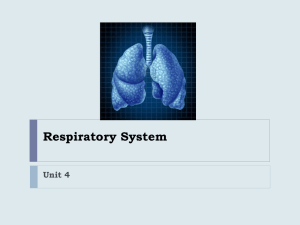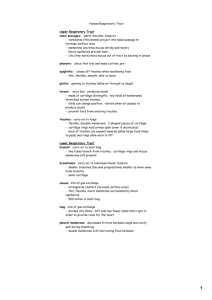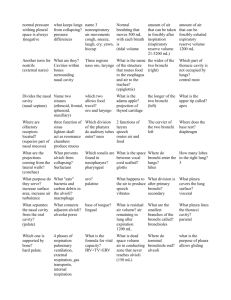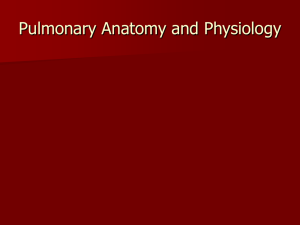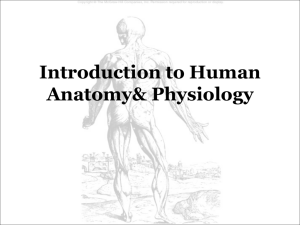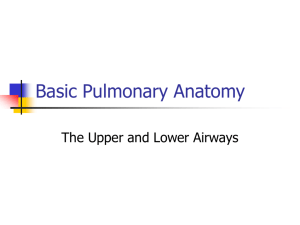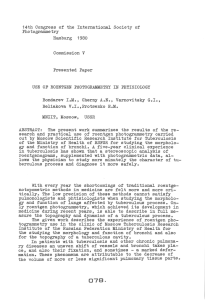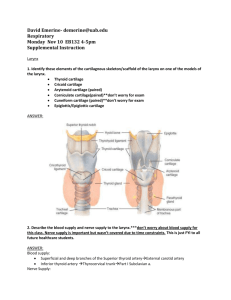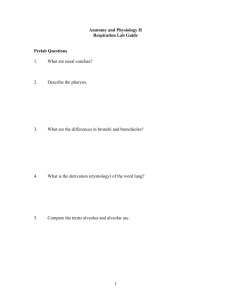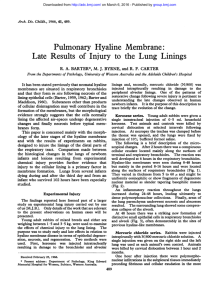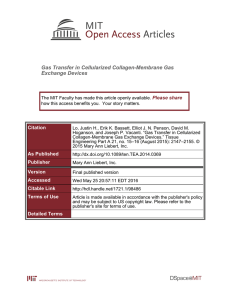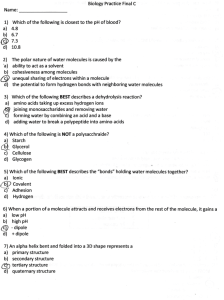Lungs are found in the thoracic cavity
advertisement
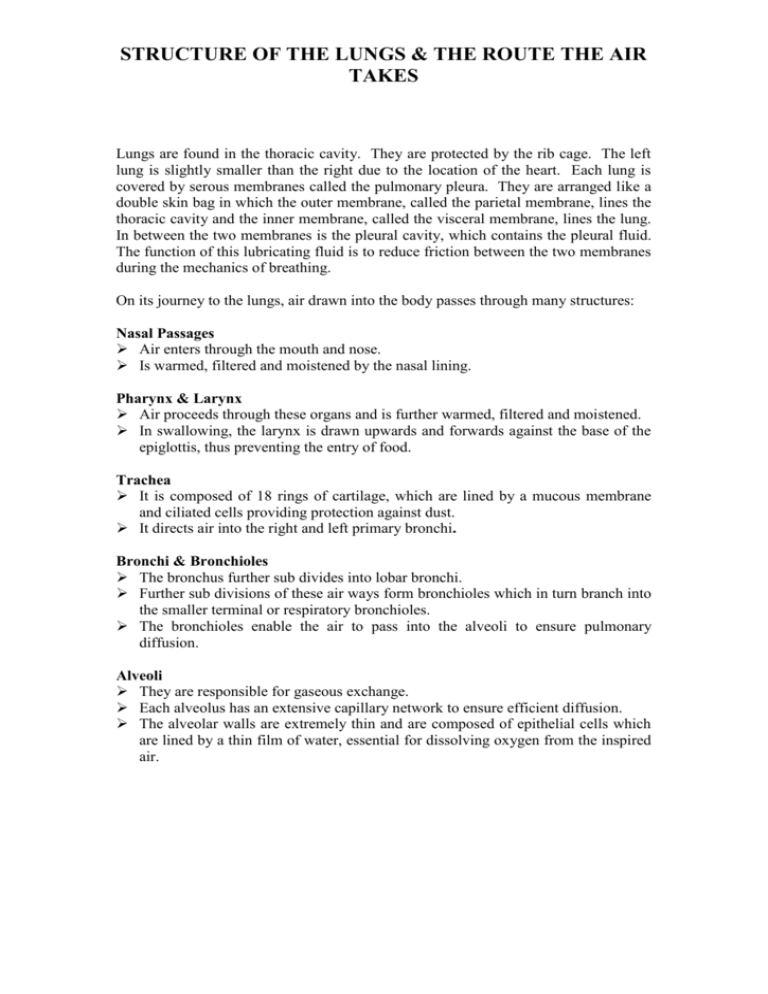
STRUCTURE OF THE LUNGS & THE ROUTE THE AIR TAKES Lungs are found in the thoracic cavity. They are protected by the rib cage. The left lung is slightly smaller than the right due to the location of the heart. Each lung is covered by serous membranes called the pulmonary pleura. They are arranged like a double skin bag in which the outer membrane, called the parietal membrane, lines the thoracic cavity and the inner membrane, called the visceral membrane, lines the lung. In between the two membranes is the pleural cavity, which contains the pleural fluid. The function of this lubricating fluid is to reduce friction between the two membranes during the mechanics of breathing. On its journey to the lungs, air drawn into the body passes through many structures: Nasal Passages Air enters through the mouth and nose. Is warmed, filtered and moistened by the nasal lining. Pharynx & Larynx Air proceeds through these organs and is further warmed, filtered and moistened. In swallowing, the larynx is drawn upwards and forwards against the base of the epiglottis, thus preventing the entry of food. Trachea It is composed of 18 rings of cartilage, which are lined by a mucous membrane and ciliated cells providing protection against dust. It directs air into the right and left primary bronchi. Bronchi & Bronchioles The bronchus further sub divides into lobar bronchi. Further sub divisions of these air ways form bronchioles which in turn branch into the smaller terminal or respiratory bronchioles. The bronchioles enable the air to pass into the alveoli to ensure pulmonary diffusion. Alveoli They are responsible for gaseous exchange. Each alveolus has an extensive capillary network to ensure efficient diffusion. The alveolar walls are extremely thin and are composed of epithelial cells which are lined by a thin film of water, essential for dissolving oxygen from the inspired air.
![The Breathing System Key Terms [PDF Document]](http://s3.studylib.net/store/data/008697551_1-df641dd95795d55944410476388f877c-300x300.png)


